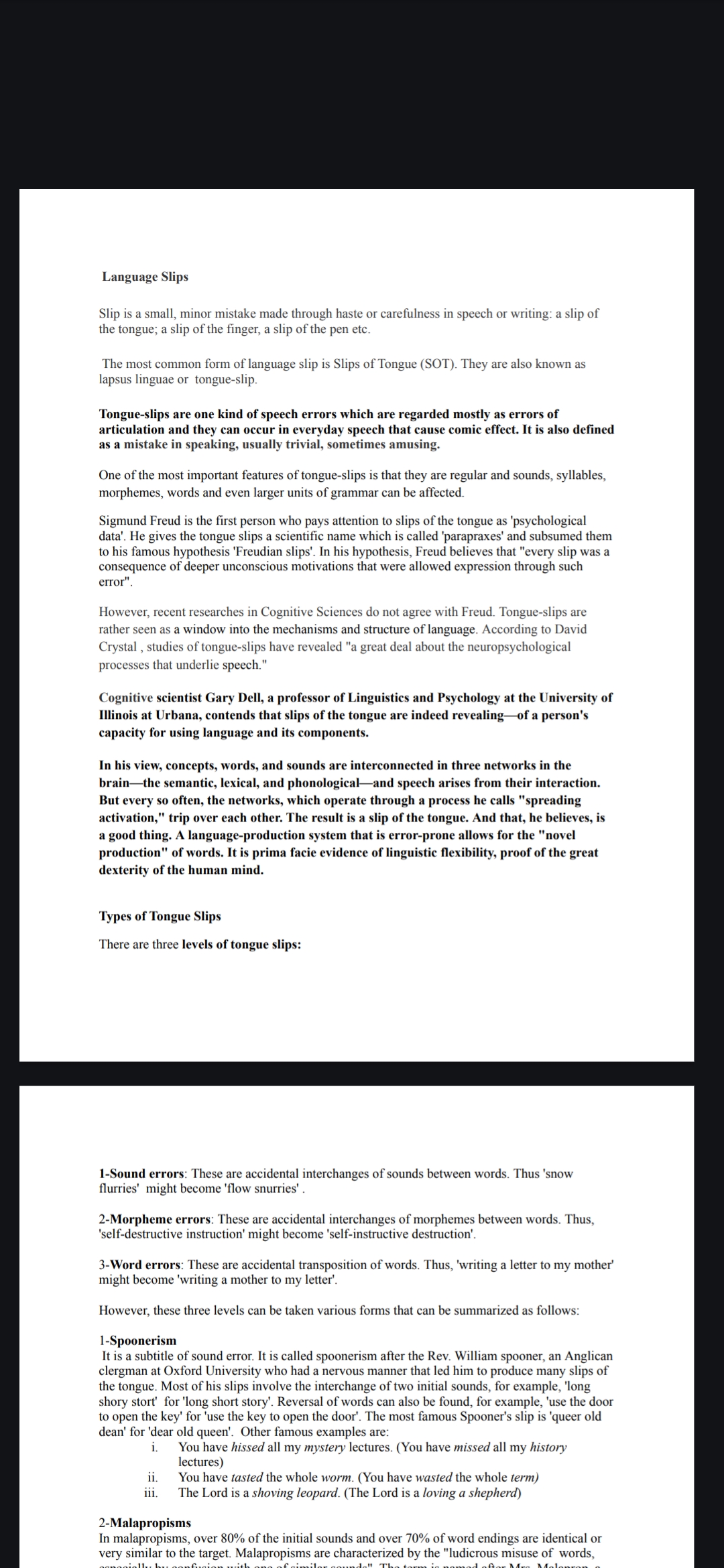Understanding Language Slips: Insights and Implications
Language Slips

Introduction to Language Slips
-
Definition: A slip is a minor mistake made due to haste or carelessness in speech or writing—this can include slips of the tongue, finger, or pen.
- Insight: Slips are part of everyday speech and can often lead to humorous outcomes.
-
Slips of the Tongue (SOT) : The most common type of language slip, also known as lapsus linguae.
- Importance: These slips highlight regular errors in articulation, affecting sounds, syllables, morphemes, words, and even larger grammatical units.
Historical Perspective
-
Sigmund Freud: First analyzed slips of the tongue as 'psychological data', coining the term parapraxes.
- Freud’s Hypothesis: Suggests that every slip is an expression of unconscious motivations.
- Insight: Freud's perspective ties language slips to deeper psychological factors.
-
Modern View: Cognitive scientists see slips as windows into language mechanisms and structures.
- Example: Studies by David Crystal show tongue-slips revealing neuropsychological processes.
- Insight: This perspective connects language slips to cognitive processes, not just unconscious motivations.
Cognitive Framework
-
Gary Dell’s Theory: A professor at the University of Illinois, Urbana, suggests that slips reveal the capacity for language use.
- Concepts, words, and sounds are interconnected in three brain networks: semantic, lexical, and phonological.
- Spreading Activation: The process through which these networks interact, leading to occasional slips.
-
Language-Production System: Dell proposes that error-proneness is beneficial for linguistic flexibility and innovation.
Types of Tongue Slips
Levels of Tongue Slips
-
Sound Errors
- Definition: Accidental interchange of sounds between words (e.g., "snow flurries" to "flow snurries").
- Insight: Sound errors demonstrate the complexity of phonological processing.
-
Morpheme Errors
- Definition: Interchanges of morphemes (e.g., "self-destructive instruction" to "self-instructive destruction").
- Insight: Affects the smallest grammatical units, showing the intricacy of morphemic structure.
-
Word Errors
- Definition: Transposition of words (e.g., "writing a letter to my mother" to "writing a mother to my letter").
- Insight: This showcases challenges in maintaining syntactic order during speech production.
Specific Forms of Slips
-
Spoonerisms
- Origin: Named after Rev. William Spooner, involving interchanging initial sounds (e.g., "shoving leopard" instead of "loving shepherd").
- Insight: Spoonerisms illustrate how stress and nervousness impact speech.
-
Malapropisms
- Characteristics: Over 80% of initial sounds and 70% of word endings are similar to the target word, often leading to humorous effects.
- Insight: Reflects confusion between phonetically similar, but contextually inappropriate, words.
Understanding language slips not only adds humor to daily life but also provides a profound insight into the workings of the human brain and its linguistic capabilities.
Extended readings: